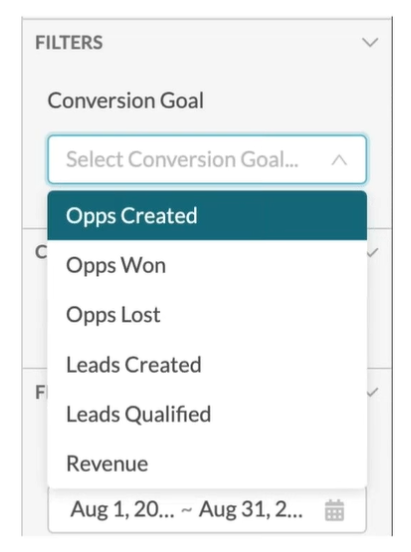
That’s because it’s a lot easier to have every person who downloads the eBook added to a Salesforce Campaign by a Pardot Form Action and then analyse the performance of your Channels in Google Sheets or Excel (maybe I should do a blog on that too). In essence, you should be thinking about the campaign in its entirety, not just as an asset or indeed a paid channel.įor many (or maybe even most) marketers using Salesforce, my views haven’t changed.

In my previous post, I suggested that you lump the promotional costs into the cost of the Salesforce Campaign to calculate ROI for the entire campaign. How do we track that in Salesforce Campaigns? Hell, we even marketed the eBook to our CRM prospects who had already converted on another marketing asset! We took our custom audiences and remarketed the ebook on LinkedIn, Facebook and Google. What about the money we spent promoting the ebook? You can see the pipeline and revenue generated by the ebook. The Opportunities get associated with the Salesforce Campaign. The eBook Demo form has a Pardot completion action that associates the prospect with the correct Salesforce Campaign. The demos produced from this have turned into opportunities and revenue. You’ve followed my advice and added a funnel to your gated content. You spent time and money producing an ebook. The bad news: Very little has changed with Salesforce Campaigns since my last post (despite Salesforce launching Multi-Touch Attribution B2B Marketing Analytics in 2018). The good news: I have a few new ideas on the subject.
#Multitouch attribution agency update#
It’s been five years since I wrote my blog on “ Why You Need to Focus On Defining Campaign Attribution in Salesforce”, and I felt it was about time to update you.

If you already have your conversion tracking set up and want to change what you’re currently using, follow these steps: This can be done with both website or Google Analytics conversion actions. Once you’ve decided on which attribution model to use, select the “Attribution model” setting when implementing tracking for each conversion action. So, aligning your goals with your multi-touch attribution model selection will help to clarify the perfect route for you and your customers’ journey. There is, of course, no one-size-fits-all answer as to which multi-touch attribution model is best for you. If you’re struggling to know which choice is best for you, do a bit of research and take inventory of your current PPC campaigns and your accounts’ specific needs. I think there is one thing we can all agree on when it comes to multi-touch attribution models: there are plenty of options to choose from! Which multi-touch attribution model should I use? Pros: Data-driven attribution can increase accuracy in your reporting by using historical data to know truly how impactful each asset might be.Ĭons: If your account doesn’t have a ton of historical data for data-driven attribution to go off of, it can be difficult to efficiently weigh in each conversion’s touchpoints. If the company behind that purchase is using marketing attribution, they will be able to see which of those channels led you to become a customer. I’d bet you didn’t just jump straight to a website and take the plunge. To understand marketing attribution, think of your last big buying decision. Marketing attribution is used to identify which campaigns or strategies are responsible for your customers becoming aware of your business and eventually purchasing your product or service.
#Multitouch attribution agency how to#

What multi-touch attribution is and why it’s important.

Multi-touch attribution helps us to give credit to our marketing channels where it’s due so we can understand what's working best. Your email campaign might have resulted in a customer, but what about the ad that captured their email address in the first place? If your marketing assets could talk, I’m sure they’d say something similar, because not all tactics are created equal.


 0 kommentar(er)
0 kommentar(er)
